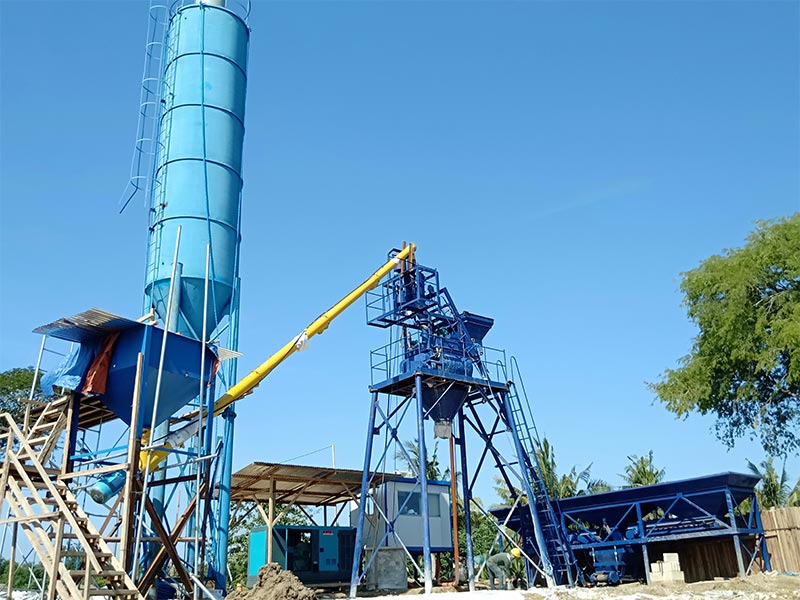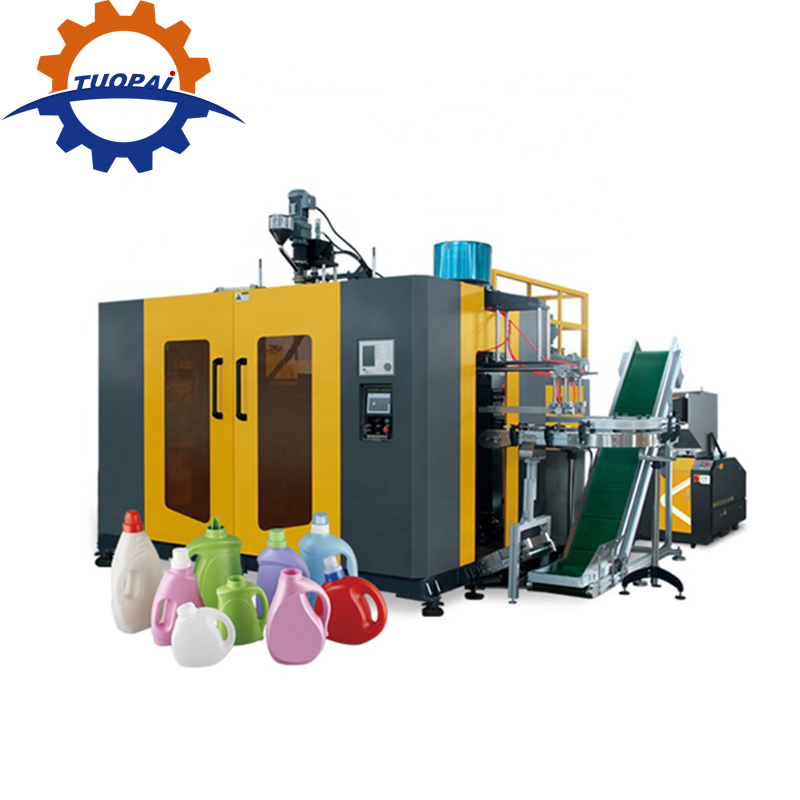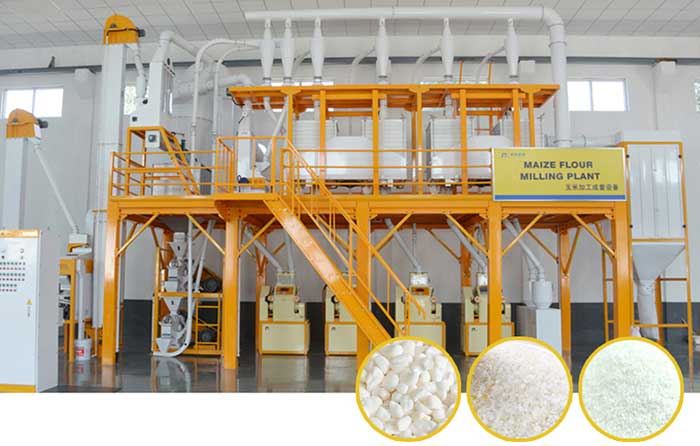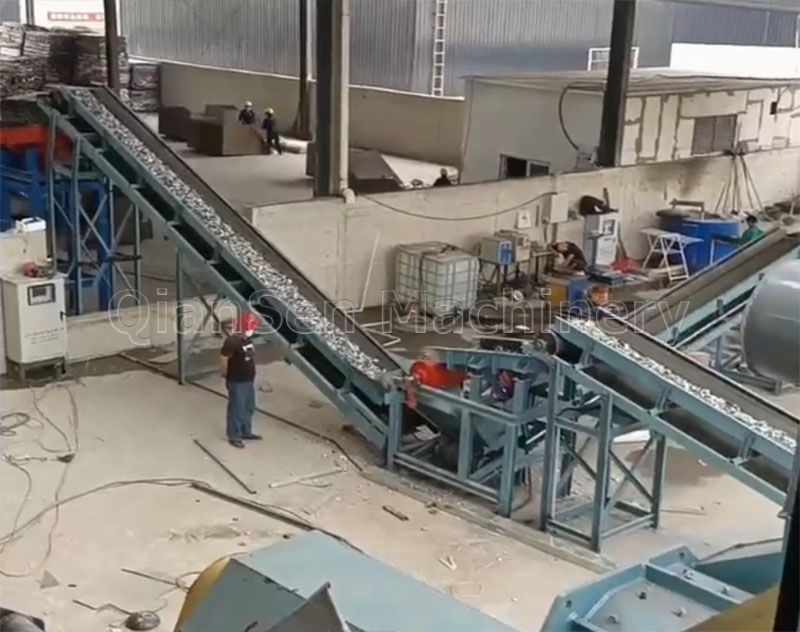The Main Components of a Concrete Batching Plant
Concrete batching plants are industrial facilities designed to efficiently mix various ingredients, including cement, water, aggregates (such as sand, gravel, and crushed stone), and chemical admixtures, to produce concrete. This process is crucial for maintaining the quality and consistency of the concrete used in construction projects, ranging from residential buildings to massive infrastructure developments.

Components of a Concrete Batching Plant
1. Aggregate Bins
At the heart of a concrete batching plant are the aggregate bins, which store different types of aggregates, each in separate compartments. These aggregates include sand, gravel, and crushed stone. The batching plant operator carefully selects the appropriate combination of aggregates to achieve the desired concrete mix design.
2. Conveyor Belts
Conveyor belts transport the aggregates from the storage bins to the mixing unit. This ensures a continuous and efficient flow of materials, preventing delays and ensuring that the concrete production process runs smoothly.
3. Cement Silos
Cement silos are used to store the essential binding agent in concrete production: cement. These tall, cylindrical structures protect cement from moisture and external contaminants, ensuring its quality remains intact until it's needed in the mixing process.
4. Water and Additive Tanks
Water is a critical ingredient in concrete production, and Skip hoist batching plants have dedicated tanks to store and control its flow into the mixing unit. Additionally, chemical additives may be used to enhance the concrete's properties, such as setting time or strength.
5. Mixing Unit
The heart of the batching plant is the mixing unit, where all the ingredients come together to create concrete. The precise combination of aggregates, cement, water, and additives occurs here. Modern batching plants are equipped with sophisticated computerized systems to ensure the accuracy of the mixing process.
The Concrete Batching Process
Batching: The first step in the process involves the measurement and loading of the predetermined quantities of aggregates into the mixing unit. This is a crucial phase as it determines the concrete's final properties.
Additional reading:Maximizing Efficiency with Horizontal Strapping Techniques
SMT AGV Equipment: Revolutionizing Manufacturing Processes
What Is a Butterfly Valve Vs a Globe Valve?
What Are the Types of Excavators?
The Laser Cutter Revolution: Transforming Design and Manufacturing
The Development Direction of Heat Treatment
What Are Some Fun Facts About Drilling Rigs?
Weighing: Accurate weighing systems measure the aggregates, cement, and additives to ensure that the mix proportions are consistent with the desired specifications.
Mixing: The mixing unit combines the dry ingredients with water and additives. This is where the magic happens as the materials are blended together to create the concrete mixture.
Transport: Once mixed, the concrete is transported to its destination using trucks equipped with rotating drums. This ensures that the concrete remains in its optimal state during transportation.
Advanced Technologies in Concrete Batching Plants
1. Automation and Control Systems
Modern batching plants employ advanced automation and control systems that allow operators to monitor and adjust the entire process with precision. This not only enhances efficiency but also reduces the margin for error, resulting in higher-quality concrete.
2. Batch Plant Software
Sophisticated batch plant software optimizes the batching process, allowing for real-time adjustments based on factors like weather conditions and concrete specifications. This ensures that the final product meets the highest standards.
3. Environmental Considerations
Many concrete batching plants are designed with environmental sustainability in mind. They incorporate features such as dust collectors and recycling systems to minimize waste and emissions, making concrete production more eco-friendly.
In the world of construction, knowledge is power, and understanding how a concrete batching plant works is a fundamental piece of that puzzle. From the aggregate bins to the mixing unit and advanced technologies, every aspect plays a crucial role in ensuring that the concrete used in our buildings and infrastructure is of the highest quality.
Additional reading:Operation Steps of Vertical Pressure Steam Sterilizer
How Does The Rising Film Evaporator Work?
Comparing Leading Enterprises in the Machinery Industry
Leading Machine Manufacturing Company: Innovating the Future
List of Leading Machine Manufacturing Enterprises
List of Machine Manufacturing Enterprises
Online Machinery Manufacturing Business Directory










